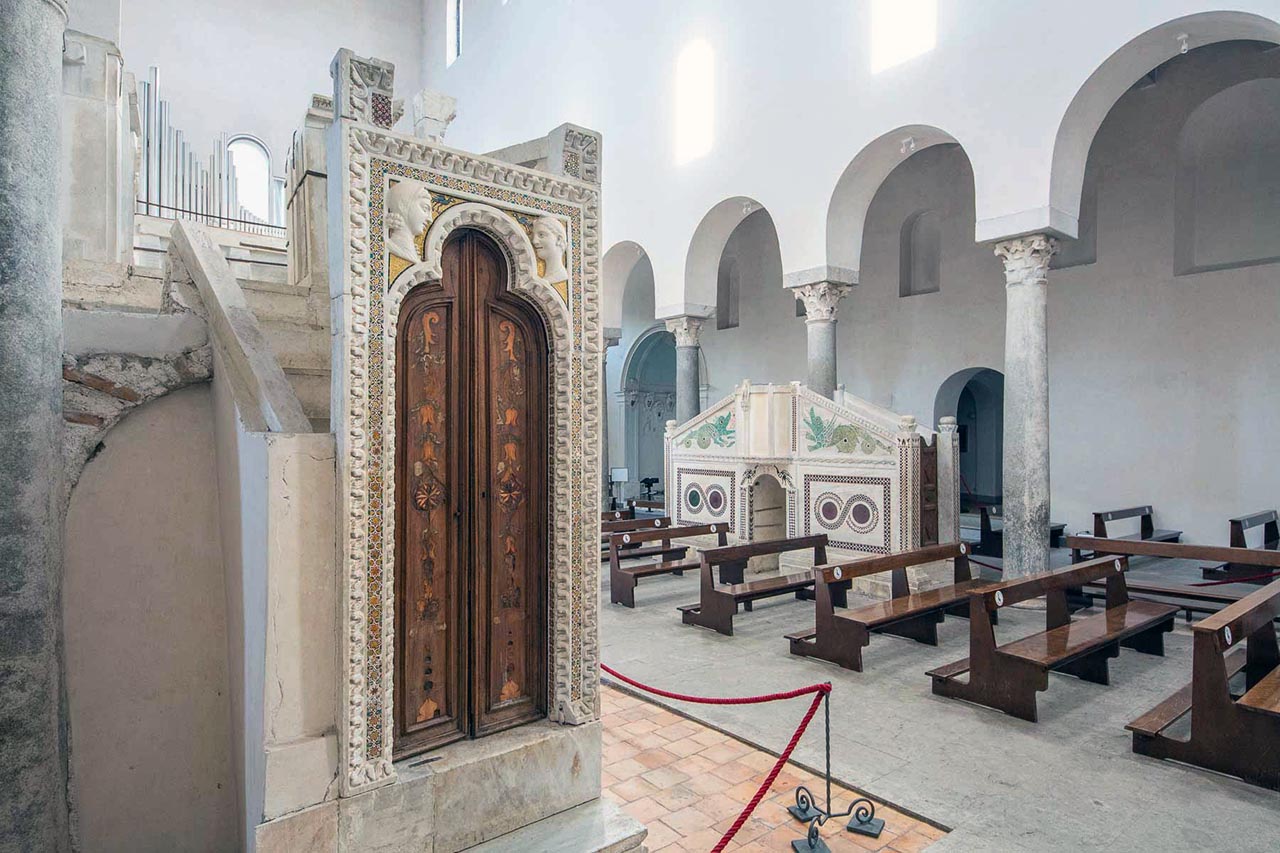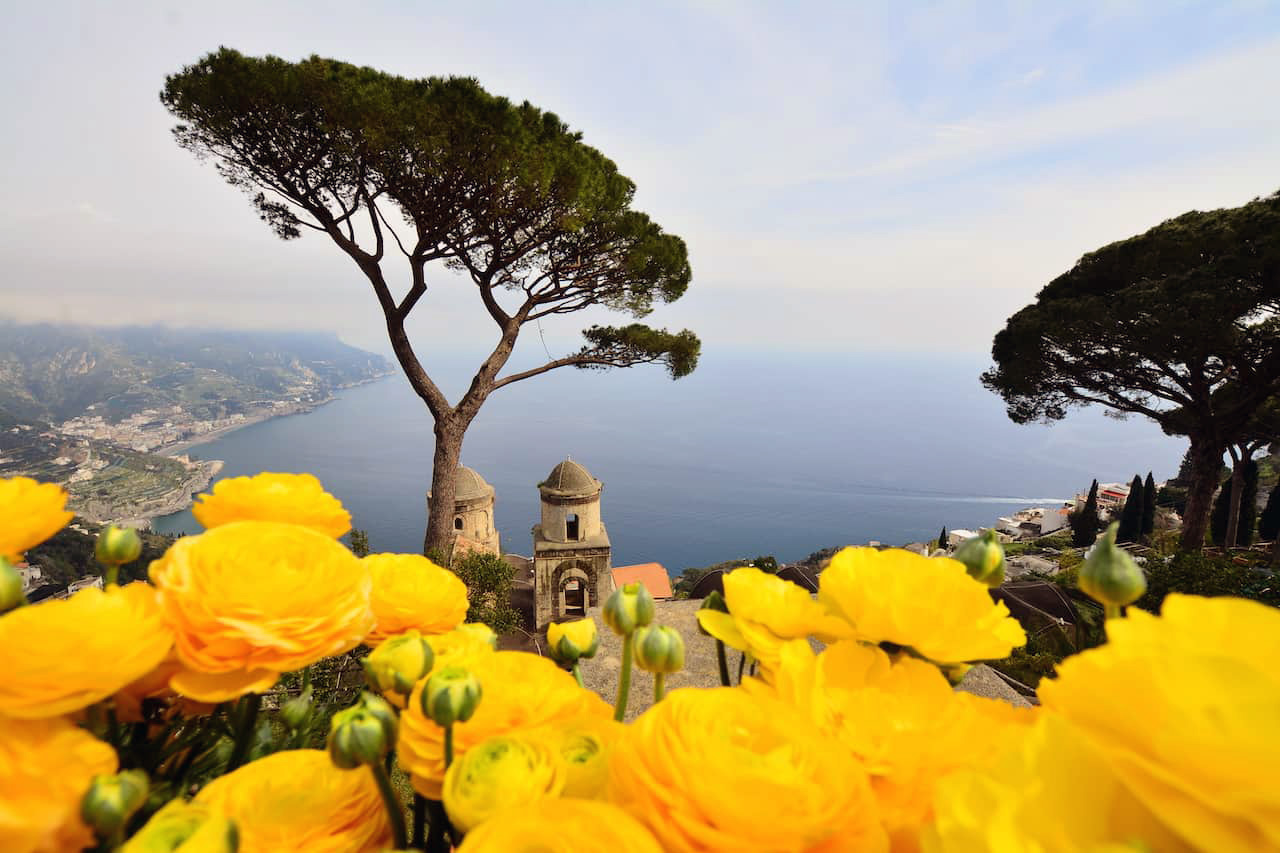Through centuries, various personalities, from the Rufolo and the Marra families to Wagner and Francis Neville Reid created the unique soundtrack of one of the most exclusive destinations on the Coast.
June 4th, 2021. By Alessio Amato, photo by Salvatore Guadagno
The Amalfi Coast displays the perfect mix of history, art, and breathtaking landscapes. And there is an aspect that merges everything in the most inspiring way: music. This land, especially the city of Ravello, has been a source of musical inspiration for centuries, regardless of topics and trends. So let’s go back to a century ago when the city was at its highest point of splendor in an age of fear, hope, crusades, and witches.
Two families were coming together.
To fully understand the strong connection binding Ravello and music, we must go back to the middle of the XIII century, when the marriage between the Rufolo and Marra families sealed a new relevant economic and political arrangement. For half a century, the two families played leading roles as inspectors of taxes, ports, customs, and castles, living in two mansions: Ravello on the West Coast and Barletta on the East. Nicola Rufolo inherited the Villa Rufolo, and he got it renovated following the Arabic architecture of the Normans in Palermo as an inspiration. Barletta, at that time, worked as one of the most influential harbors towards the East, and because of that, numerous merchant families settled in the city.
They weren’t the only ones. The Knights Hospitaller and the Knights Templar also settled there. Even if the Marras and the Rufolos were court clerks and faced a terrible death, the families were never direct affiliates of the Knights Templar. The Rufolo family started working for Carlo I d’Angiò after conquering the Kingdom of Sicily in 1266; during this time, the Knights Templar were already lending significant sums of money to individuals and kings alike. In 1283 though, Carlo I and his son Carlo II moved accusations against Rufolo and Marra, sentencing them to death on charges of high treason.

Decadence
A few years later, the Templars financed King Philip IV of France, the man who issued an order of capture to his creditors in the Land of France on Friday, 13 October 1307 and dissolved, that way, the order. According to popular tradition, Friday the 13th is considered a dreadful day because of this event.
From that day onward, this little city on the Coast suffered from decay and years of neglect. But despite plagues and earthquakes that tainted this land, after almost six centuries from that infamous day, the Coast still manages to attract travelers and intellectuals worldwide.

Francis Neville Reid
One of those intellectuals is the Scottish botanist France Neville Reid, who moved to the foothills of Vesuvio between 1845 and 1848. The man bought Palazzo Rufolo in 1851 from the d’Afflitto family. He got a mansion in decay, without doors or windows, still standing thanks to a lucky strike since the central part of the structure had almost completely collapsed.
But Mr. Reid did not give up and invested in the renovation of the building, focusing mainly on bringing back to life the gardens around the mansion. It wasn’t a coincidence that the botanist played such an essential role for Ravello since he had been interested in the Amalfi Coast from a young age. Augustus Hare wrote about him: “all of his commitment to the poorer population of Ravello is evident in the clear supremacy those citizens show when compared to the close villages.”
International recognition
He devoted his finances to restoring the Pulpit of the Cathedral donated by Nicola Rufolo and his wife Sigilgaida Della Marra and bought the Palazzo Episcopio at auction into an inn, then into a hotel, the very first in Ravello.
When he died in 1892, The New York Times wrote this to celebrate his life: “Mr. Francis Nevile Reid, who died at Ravello at the age of 66, will be greatly missed and sincerely mourned throughout the beautiful region of southern Italy where he had lived for something like 40 years. […] Mr. Reid set himself to introduce some civilization into his commune and neighborhood. […] he gave employment to the underfed and underpaid people; […] he raised the rate of wages”.
A fact that rarely emerges in the historical sources but often in the iconography is his direct correlation with the Rosicrucians, a movement that took much from the Templar tradition. His beautiful tomb, made in marble, shows the symbol of the Rosicrucians and can be found today in Ravello.

Richard Wagner
On 26 May of 1880, Wagner and his wife Cosima and the Russian painter Paul von Joukowsky were welcomed in Villa Rufolo by the building keeper Luigi Cicalese. The trio had already visited the Cathedral earlier that day since the music composer traveled around to find inspiration to complete his “Parsifal.”
It was indeed in Ravello and, thanks to the Villa Rufolo’s gardens, that he found the spark that helped him finish the opera’s second act. In the guest book, he wrote: “I found the magic garden of Klingsor.”
Once he completed the Villa tour, they all had breakfast in Villa Eposcopio, an inn run by Francis Nevile Reid’s steward, Pasquale Palumbo I, and his Bernese wife, Elisabeth von Wartburg. Probably, the perfect union of Arabic culture and Normans’ power of the Villa also worked as a source of inspiration for the artist.
His last completed opera
Parsifal is the last opera composed by Wagner and the last one to follow the medieval religious traditions motives, such as the quest for the Holy Grail and the Holy Lance. In his journey filled with challenges, a young, naive soul wrongly perceived as crazy named Parsifal retrieves the Holy Lance and defeats the evil wizard Klingsor.
The composer staged the opera in Bayreuth, a German city that had always been linked to esotericism (there’s still a museum dedicated to freemasonry today). This is one reason why lots of historians during the years associated Richard Wagner with masonic movements. Regardless, the opera marked an unforgettable moment in the history of Ravello and took part in forging the identity of the place forever.

The first edition of the Ravello Festival
On 18 May 1932, Ravello hosted a grand concert: an occasion to honor Wegner and to thank Mr. Reid. Locals, tourists, and even relevant personalities showed up to celebrate: Prince and Princess of Piedmont Umberto di Savoia and Maria José of Belgium, Maria di Savoia, Princess of Hesse, Princess Euxodia of Bulgaria, and Princes Roman of Russia. Additionally, even Prince and Princess of Sulmona Borghese, Lieutenant of Vascello Montezemolo, and Captain Piroddi, the officer of the Prince of Piedmont, attended.
The concert was held in the gorgeous garden, inspiring Wagner to write his second act and his friend Paul von Joukowsky. The painter sketched Parsifal in that garden, surrounded by naked young girls trying to seduce him.
The symbolism of flowers
Royal was gifted bundles of roses from Paestum and Ravello at the event. The roses from Paestum have been appreciated since ancient times for their elegant and beautiful appearance, fantastic scent, and the characteristic of blooming only twice a year.
The roses of Ravello were one of the favorites of the Scottish botanist, who thought they were the perfect symbols of perfection and infinity (ideas associated with this flower since the Middle Ages). In the summer of 1953, Paolo Caruso, President of Azienda Autonoma Soggiorno e Turismo in Ravello, followed the tradition while adding a bold stage floating in the air during the event. On the 76th anniversary of Wagners’ death, the city hosted two impressive concerts where Hermann Scherchen and William Steinberg played Teatro San Carlo’s orchestra.

Music of today
Over the years, Ravello citizens have contributed to the festival’s perfect rendition. Pasquale Palumbo recently joined Paolo Caruso in the story of this event. The man started giving music lessons to the young people of Ravello when he was very young; then, little by little, he became an active part of the concert’s organization in his city and all around the Amalfi Coast.
Thanks to his brilliant idea, a sunrise concert takes place every 11 August in Ravello, and it has quickly become a must event for the city’s summer season. The show starts around five in the morning and ends when the sun shines bright in the sky, a unique celebration that, as the sun rises, still amazes us every time.
(Translation by Michela Pandolfi)
